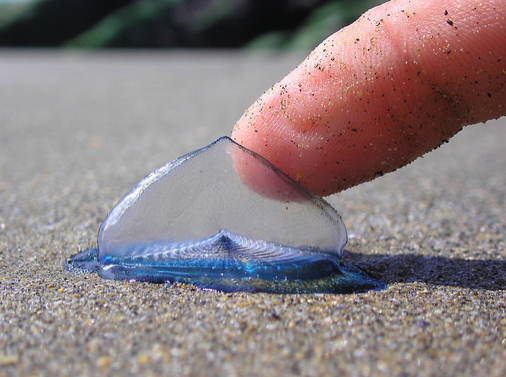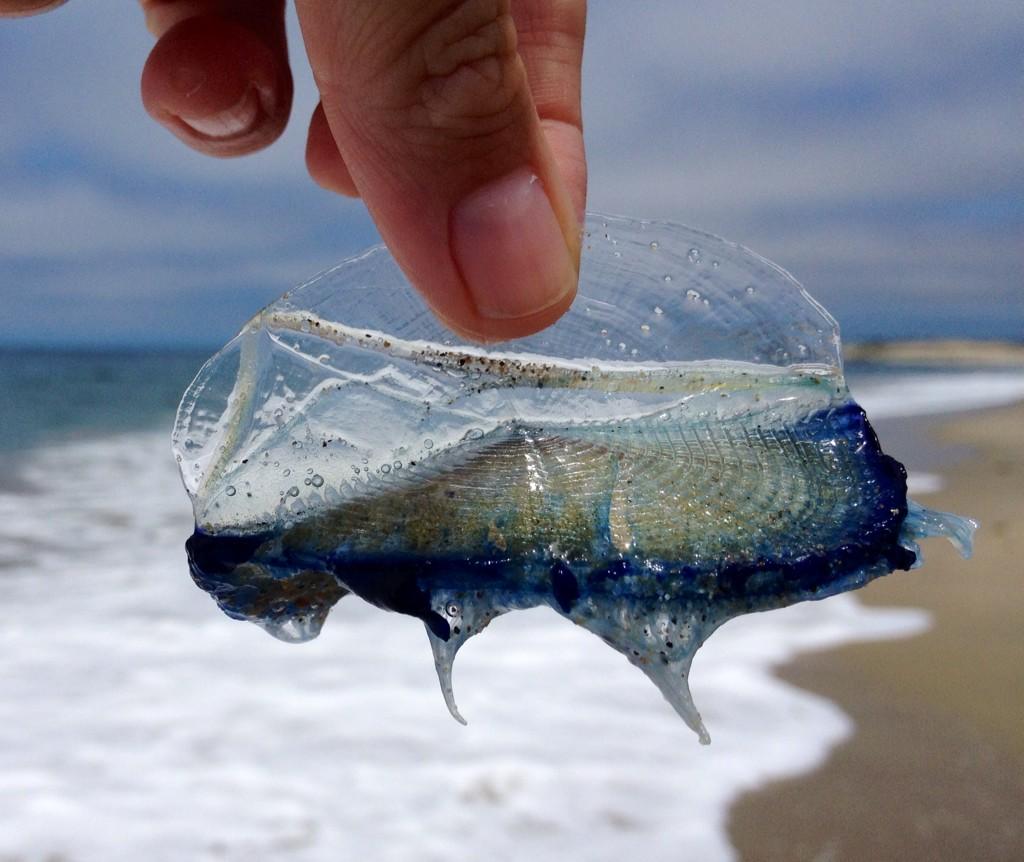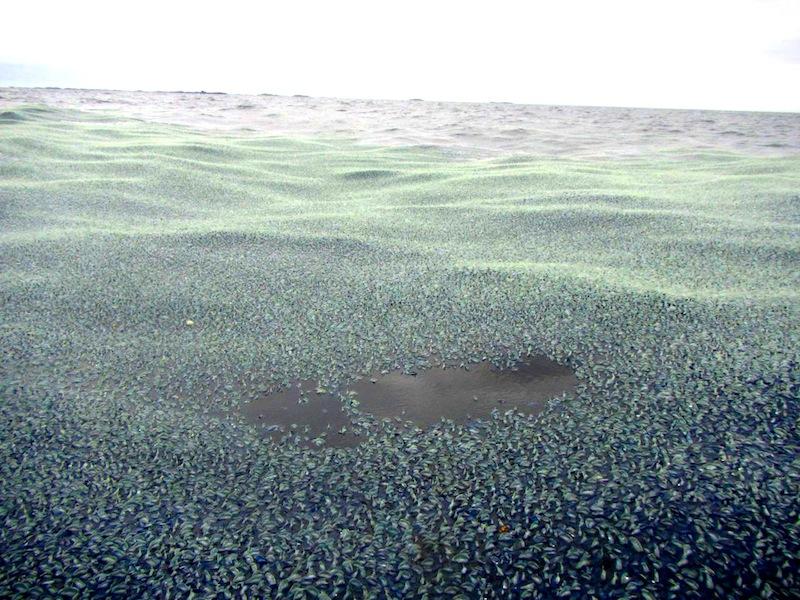The tiny sea
creatures, called "by-the-wind sailors," washed ashore in Humboldt,
California (above) and other beaches along the West Coast.
From LiveSciences by Tanya Lewis
An invasion is afoot along beaches from Oregon to California: Millions of glassy purple, jellyfish-like sea creatures that look like sailboats have been washing ashore.
Known as "by-the-wind sailors," they typically live in the open ocean, but when warm water and storms draw them near shore, the wind blows them onto beaches, where they die in stinking piles.
These creatures, whose scientific name is Velella velella, aren't actually jellyfish, but hydrozoans, related to the Portuguese man-of-war.
Yet unlike man-of-war, they don't sting humans, though authorities don't recommend touching your face or eyes after handling them.
or also purple sail, little sail, or simply Velella.
Each little sailboat, measuring about 2.75 inches (7 centimeters) long, is in fact a colony of hundreds of smaller organisms, each with a specialized function such as feeding or reproduction, researchers say.
"They sit at the surface of the ocean and have little sails," and their movement depends on which way the wind is blowing, said Richard Brodeur, a fishery biologist at NOAA Fisheries' Newport, Oregon, research station.
Most of the time off the coast of Oregon and California, the winds are blowing toward the South, into the open ocean, Peterson said.
But when big storms sweep out of the southwest — like one that hit California two weeks ago — it blows these living flotillas onto the beaches, he said.
There, they usually die, giving off a bad smell as they rot, he added.
Tons of the nautical creatures can be found at sea, but they don't always come ashore, Brodeur told Live Science. But recently, huge numbers of them have been washing up on land.
"This happens every few years, where they get blown onto the beaches," said Bill Peterson, an oceanographer also stationed at NOAA Fisheries' Newport lab. In 2009 or 2010, the beach had piles of the creatures 2-feet to 3-feet (60 to 90 cm) thick, and "it stunk like heaven," Peterson told Live Science.
Velella - Planktonic Vessels from Parafilms
Colonies of polyps transported by prevailing winds, velella drift at the surface of warm seas.
Plankton Chronicles Project by Christian Sardet, CNRS / Noe Sardet and Sharif Mirshak, Parafilms
The animals can be found all over the world, but they mostly live in tropical or subtropical waters, Peterson said.
They like warm water, which has recently been pooling off the Oregon and California coasts, he said. When you get warm water combined with storms, that's when the creatures blow ashore.
Peterson said these beach invasions don't happen every year, but there's nothing unusual about the one this year.




YouTube : The secret life of Velella: Adrift with the by-the-wind sailor
ReplyDelete